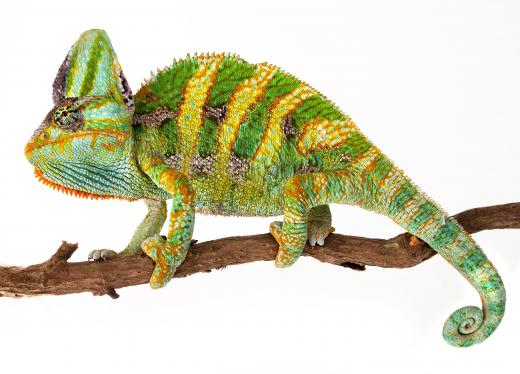What is Order Squamata?
 Michael Anissimov
Michael Anissimov
Squamata is an order of reptiles that includes snakes, lizards, and amphisbaenids ("worm-lizards"). It is the largest recent order of reptiles, with over 7,900 species. Squamata accounts for about 96% of living reptile species. The three other living orders alongside Squamata include Crocodilia (crocodiles, gavials, caimans, and alligators), Sphenodontia (just two species of tuatara), and Testudines (turtles and tortoises). Squamates are the order of reptiles most varied in size, ranging from the 16 mm (0.63 in) Jaragua Sphaero (a gecko), which can fit on a quarter, to the 8 m (26 ft) Green Anaconda, which have occasionally consumed humans.
Squamata means "scaled reptiles," which is the distinctive feature of the order: horny scales or shields. Other reptilian orders have scales, but they differ in shape and form from squamate scales. Scales are also known as osteoderms. Another distinctive feature are quadrate bones, which allow the upper jaw to move independently of the braincase, permitting the swallowing of very large prey. This can allow a squamate like a python to consume an entire deer in one gulp, though the entire gulp may take several hours.

The best known members of Squamata are snakes and lizards, with the latter making up a paraphyletic group (consisting of more than one unrelated category). Lizards are sometimes broken down into two suborders -- Iguania (ignuanas and chameleons) and Scleroglossa (the rest), or just one, called Lacertilia. Snakes are one suborder, called Serpentes, broken down into two infraorders, one of which is just blind snakes, the other making up the rest. About 60% of Squamata is thought to form a venomous clade Toxicofera, including almost all venomous squamates and some non-venomous snakes and lizards.

Like most other reptiles (except for birds, which descend from dinosaurs), squamates are "cold-blooded," or more precisely, ectothermic, meaning most of their body heat comes from the outside. Accordingly, some squamates sun themselves on rocks to maintain body heat. Snakes that consume very large prey also bathe in the sun to promote digestion.
The least familiar group of squamates are the worm-lizards, pink, scaly burrowers just 6 inches in length. Besides being subterranean, they are genuinely rare, found mostly in South America and Africa. Superficially, they resemble earthworms.
AS FEATURED ON:
AS FEATURED ON:












Discuss this Article
Post your comments